#pictish stones
Explore tagged Tumblr posts
Text






Loch Kinord Ancient Pictish Cross Slab, Loch Kinord, Aberdeenshire, Scotland
#pict#picts#pictish#archaeology#ancient living#ancient cultures#ancient crafts#interlace#knotwork#pictish stones#pictish art#ancient livinge#early beliefs#designwork#symbols#landscape#Scotland
178 notes
·
View notes
Text









A long while since I got to St Vigeans, but here are a couple of snaps of the stanes in the excellent wee museio including saints breaking moon-like breid, assorted craiturs and profiles in hoodies, and a triquetra amid the z-rods and ither symbols.
1 note
·
View note
Text

54 notes
·
View notes
Text


blood monolith
32 notes
·
View notes
Text
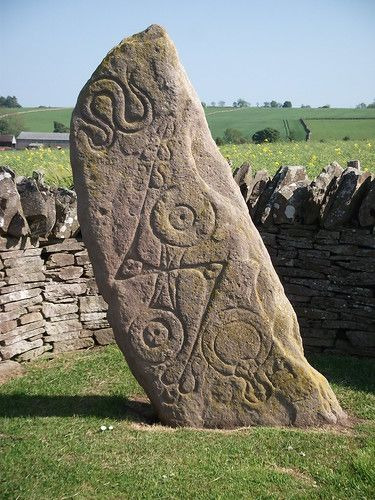
Pictish Symbol Stone, Aberlemno, Angus, Scotland
92 notes
·
View notes
Text





























For some reason, I decided to spend this afternoon drawing copies of thirty different variations of the Pictish Beast (twenty-nine separate images, but I put the two on the Dunfallandy Stone together). I've had to make a few estimates where the photos I was working from (mostly mine, occasionally cheating with some from Historic Environment Scotland's Canmore database) weren't entirely clear or the stone itself is too weathered, but they're close enough to be getting on with. None of these are just from reading. I have seen every single one of them in person.
Nobody really knows what the hell this thing is supposed to be. Theories have included both real animals such as seahorses, dolphins and elephants (which I maintain is a stupid interpretation) and mythical creatures such as kelpies or some kind of sea dragon. Personally I lean towards the 'mythical aquatic creature' version - the little we know of pre-Christian Pictish religion suggests that bodies of water were pretty significant to them - but in the absence of a definitive answer, 'Beast' is still probably the best descriptor.
Some of these are on stones displayed in museum collections. In these cases, I've noted which museum in brackets:
NMS: The National Museum of Scotland in Edinburgh
The Meffan Institute in Forfar
The McManus Gallery in Dundee
The Meigle Sculptured Stone Museum in Meigle, Perthshire
Perth Museum in... Take a wild guess.
The little museum in the grounds of Dunrobin Castle in Sutherland
Otherwise, the stones are still in situ or pretty close to it.
No, I don't know what's going on with the one at Fyvie.
4 notes
·
View notes
Text

#pictish stone#neolithic art#monolith#rock art#petroglyphs#salmon#wikimedia commons#found#found image
12 notes
·
View notes
Text
Ballymeanoch & Dunadd
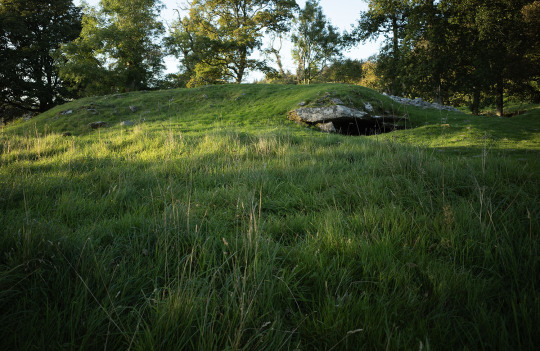
View On WordPress
#Argyll#Ballymeanoch#Bronze Age#Chambered Cairn#Dunadd#Fort#Henge#Kilmartin#Megalithic#Neolithic#Pictish#Prehistoric#Prehistory#Scotland#Stone Row
2 notes
·
View notes
Text
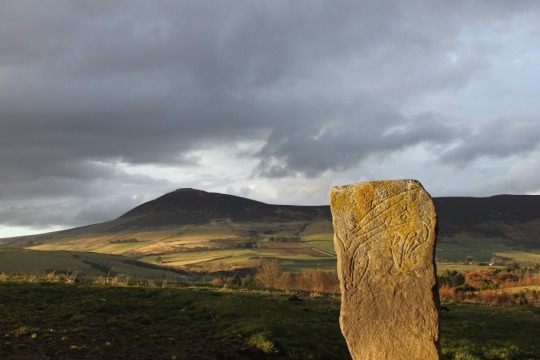
Study reveals new insights into the origins of Scotland's mysterious Picts
Scotland's Picts have long been viewed as a mysterious people with their enigmatic symbols and inscriptions, accentuated by representations of them as wild barbarians with exotic origins.
But a newly published study by an international team led by researchers at the University of Aberdeen and Liverpool John Moores University is helping to shed new light on the origins of the Picts.
The Picts were first mentioned in the late 3rd century CE as resisting the Romans and went on to form a powerful kingdom that ruled over a large part of northern Britain, in present-day north-east Scotland.
In the medieval period, the Picts were considered immigrants from Thrace (north of the Aegean Sea), Scythia (eastern Europe), or isles north of Britain but as they left few written sources of their own little is known of their origins or relations with other cultural groups living in Britain.
Archaeologists have conducted the first extensive analysis of Pictish genomes and their results have been published today (27/04/2023) in the open access journal PLOS Genetics.
The results reveal a long-standing genetic continuity in some regions of the British Isles, helping to build a picture of where the Picts came from and providing new understanding of how present-day genetic diversity formed. The findings also confirm descriptions by the great English historian Bede of the far-flung eastern origins of the Picts as one of myth and fantasy.
The researchers used Identity-By-Descent (IBD) methods to compare two high-quality Pictish genomes sequenced from individuals excavated from Pictish-era cemeteries at Lundin Links in Fife (Southern Pictland) and Balintore in Easter Ross (Northern Pictland) to those of previously published ancient genomes as well as the modern population.
Dr Linus Girdland Flink of the University of Aberdeen, senior corresponding author of the study, said: “Among the peoples present during the first millennium CE in Britain, the Picts are one of the most enigmatic.
“Their unique cultural features such as Pictish symbols and the scarcity of contemporary literary and archaeological sources resulted in many diverse hypotheses about their origin, lifestyle and culture, part of the so-called ‘Pictish problem’.
“We aimed to determine the genetic relationships between the Picts and neighbouring modern-day and ancient populations.
“Using DNA analysis, we have been able to fill a gap in an understudied area of Scotland’s past.
“Our results show that individuals from western Scotland, Wales, Northern Ireland, and Northumbria display a higher degree of Identity-By-Descent (IBD) sharing with the Pictish genomes, meaning they are genetically most similar among modern populations.”
This genetic make-up was distinct from areas of southern England where there is a greater relative degree of Anglo-Saxon heritage.
Dr Adeline Morez from Liverpool John Moores University, lead corresponding author of the study, adds: “Our findings also support the idea of regional continuity between the Late Iron Age and early medieval periods and indicates that the Picts were local to the British Isles in their origin, as their gene pool is drawn from the older Iron Age, and not from large-scale migration, from exotic locations far to the east.
“However, by comparing the samples between southern and northern Pictland we can also see that they were not one homogenous group and that there are some distinct differences, which point to patterns of migration and life-time mobility that require further study.”
The analysis of mitochondrial genomes from Lundin Links has also provided an insight into another Pictish myth – that they practised a form of matriliny, with succession and perhaps inheritance going to the sister’s son rather than directly through the male line.
“In a matrilocal system we would expect to find females staying in their birthplace after their marriage and throughout their life.
“At Lundin Links, diversity in the maternally inherited mitochondrial DNA suggests this was not the case. This finding challenges the older hypotheses that Pictish succession was passed along the mother’s side and raise further questions about our understanding of Pictish society and its organisation.”
10 notes
·
View notes
Photo



sie/magi/ru/arc galdurian malificae stone femme lesbian flag!!
pls credit me if you use- thnx!
#sie magi ru arc#galdurian#malificae#stone femme#femme#lesbian#sie magi ru arc galdurian malificae stone femme lesbian#my flags#oc#that's deirdre!!!#sie's one of the order goddesses :3#well. 2 of hir domains are peace and healing#but still same category#sie's the irish one! :D#sie's the eccentric druid that lives in the woods#and is probably autistic. def has avpd now that i think abt it#also sie killed hir pictish (scottish) counterpart just because sie could.#also...magical power#there's sort of a highlander thing going on with the order and chaos children
9 notes
·
View notes
Text
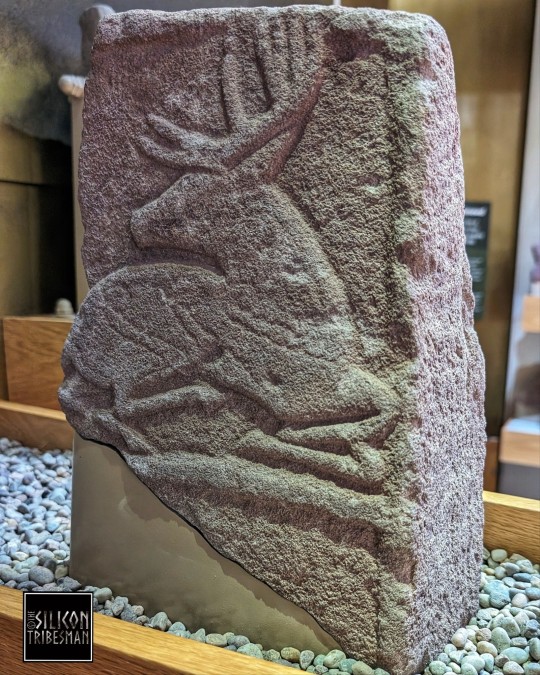
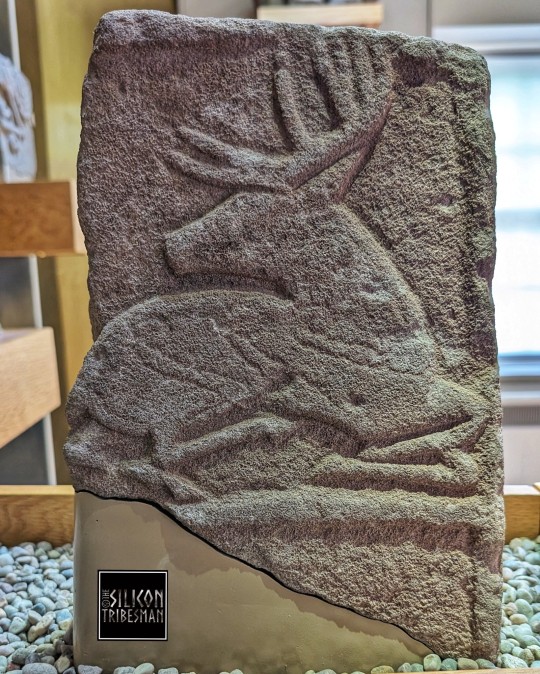
Pictish Stag Symbol Stone, circa 9th Century CE, St. Vigeans Stones and Museum, Arbroath, Scotland
Considered by many to be one of the finest Pictish animal depictions.
#pict#Pictish#pictish art#pictish beast#pictish stones#ancient cultures#ancient living#ancient craft#archaeology#relic#fragment#stag#deer#nature#stonework#st vigeans#Scotland
1K notes
·
View notes
Text
A Hidden Gem in The Last Kingdom...

THIS IS VERY NICHE I KNOW but did you know the Hilton of Cadboll Stone was snuck into The Last Kingdom?
The Stone was carved in c.800 CE and portrays an aristocratic FEMALE horse rider with her hunting party (lets go girlies!)
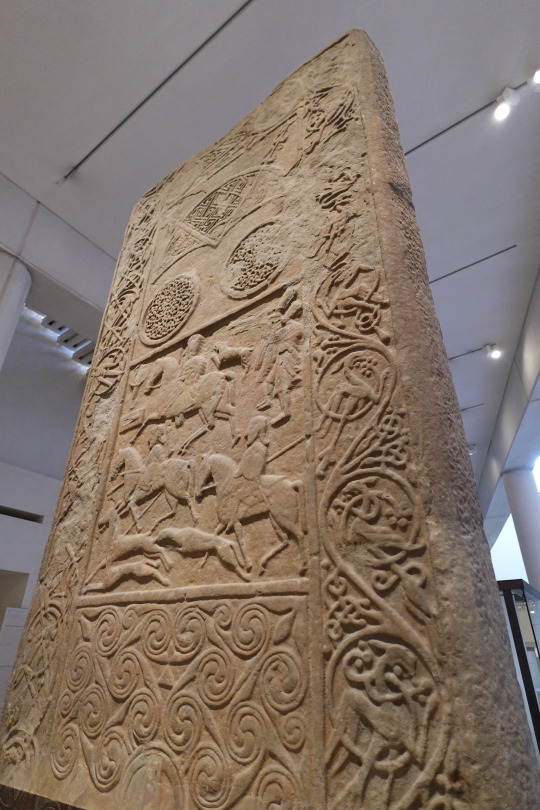
But in The Last Kingdom, the stone has been transformed into a throne fit for a king! King Constantin II of Scotland to be precise x
youtube
Find out all about it in this weeks video!
Let me know, how do you feel about archaeology being used in this way? Do you think its harmless and potentially encouraging? Or do you think it's inaccuracies may do more harm than good?
And don't forget to like and subscribe! <3
#scottish youtuber#ancient history#archaeology#archaeogaming#youtube#chaotic academia#archaeolorhi#museumcore#the last kingdom#hilton of cadboll#hilton of cadboll stone#pictish#the picts#medieval scotland#medieval britain#seven kings must die#medieval art#uhtred of bebbanburg#king constantin ii#medieval history#history#pictish carving#pictish art#uhtred sone of uhtred#finan#sihtric#tlk#osferth#osbert#aethelstan
0 notes
Text
look at this Pictish stone


The snakes biting each other. The beast eating a man. The creatures fighting over prey. The huntsman. The cow. I wonder what story it was telling.
106 notes
·
View notes
Text

A remarkable archaeological discovery has been made in Moray, Scotland, where a Pictish ring, estimated to be between 1,000 and 1,500 years old, was uncovered. The ring, believed to be of significant historical and cultural value, offers a rare glimpse into the Pictish people, an ancient Celtic group known for their distinctive art and traditions. This discovery is especially important because Pictish artifacts are relatively scarce, making this find an extraordinary contribution to our understanding of Scotland's early history.
The Pictish ring was unearthed during an excavation in a rural area of Moray, with experts suggesting that it may have been part of a burial or ceremonial site. The craftsmanship of the ring, with its intricate designs and symbolism, sheds light on the advanced skills of the Pictish people. Archaeologists are excited about the potential for further discoveries in the area, as it may help to fill in gaps in the history of the Picts, a society that left few written records but is known for their stone carvings and enigmatic symbols.
As researchers continue to study the ring, its exact purpose and significance remain subjects of ongoing speculation. Some experts believe it may have had a ritualistic or spiritual function, possibly related to Pictish beliefs or ceremonies. The discovery of such an artifact provides a rare opportunity to examine the material culture of the Picts, offering a tangible connection to a civilization that once thrived in what is now Scotland over a millennium ago. This find is a testament to the enduring mystery of the Picts and the potential for future discoveries to further enrich our understanding of their legacy.
95 notes
·
View notes
Text



St Madoe's Stone , Perth Museum.
The most complete of all the pictish/Celtic stoones I saw on display on Monday, this was found lying down in St Madoes Churchyard, Perthshire during 1830's. . In the 1920s it was moved, in its base, to stand against the wall beside the church door. In the 1990s it was taken to Perth Museum & Art Gallery.
One side, as seen in my gif, is dominated by the ring-headed cross that fills what we can accept as the front of the slab. It is surrounded by biting dogs and with two lion-like creatures facing each other across the top of the stone.
The other side of the slab shows three cloaked and hooded riders, probably churchmen (possibly a reference to the road and its users between St Andrews and Scone) and below them three Pictish symbols: a crescent and v-rod, a double-disc and z-rod and a Pictish beast. The symbols are much worn due to exposure to the elements when it stood in thechurchyard.
In the first thousand years AD, the country we now call Scotland was dominated by changing groups of Celtic peoples, most notably the Picts. From AD 250-900, they controlled most of Scotland north of the River Forth. We do not know what they called themselves. The Picts – meaning “the painted ones” – is the name the Romans gave them. Their language has disappeared and no Pictish manuscripts are known to have survived. But their art does survive on over 300 pieces of carved stonework and a much smaller number of portable objects such as jewellery.
There at least 17 sites around the Perth area, they include Stone Circles, a Pictish Free-Standing Cross, Pictish Symbol Stones and stones with cup marks, cup and ring marks are by far the most common motif, if you remember, or have ever inspected the Caiy Stone, at Oxgangs, which I visited and posted pics of last year, there are 6 of thes type of marks on this stone.
Perth Museum has several fragments of smaller stones which I shall post at a later time.
#scotland#scottish#history#Perthsire#Perth#Perth & Kinross#Celtic Stone#Celtic Cross#Perth Musem#My pics
96 notes
·
View notes
Text









I then headed further up Speyside to Inveravon Kirk, which for a change I did not need to find anyone to let me into, partly because they'd left it unlocked anyway and partly because the stones are kept in an open porch to one side. The collection consists of three large stones and a small block. From left to right the big ones show:
A Crescent-and-V-Rod above a Beast
A richly carved mirror case above an eagle, with a small mirror and comb beside the eagle
Another Crescent-and-V-Rod, a bigger mirror and comb, and a symbol usually called a 'Triple disc and bar', theorised to represent a cauldron seen from above.
The little block has obviously been cut down for reuse at some point, but still clearly shows the head of a Beast.
OK, I think that's enough for today. I'll do some more tomorrow.
4 notes
·
View notes